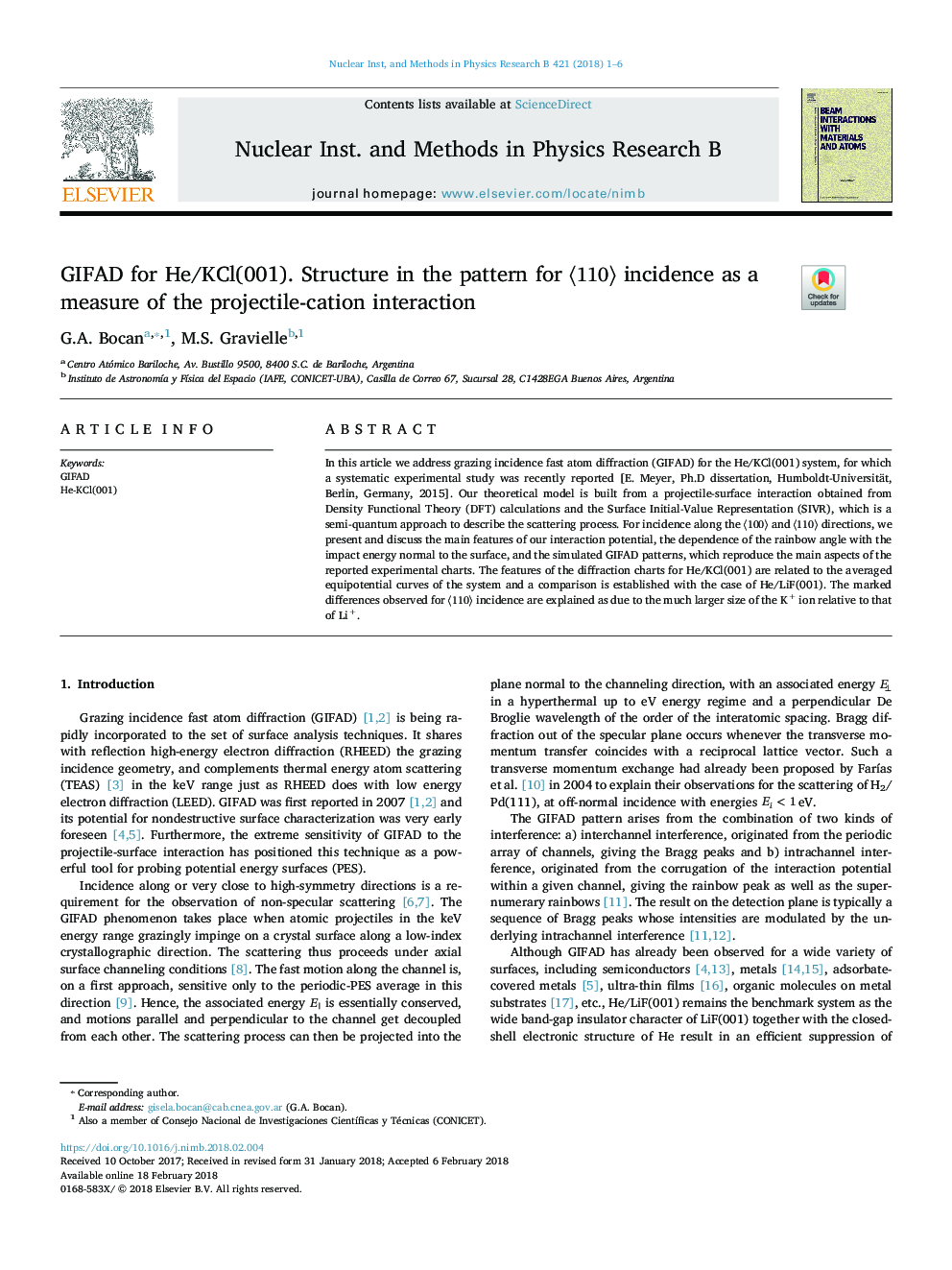| Article ID | Journal | Published Year | Pages | File Type |
|---|---|---|---|---|
| 8039251 | Nuclear Instruments and Methods in Physics Research Section B: Beam Interactions with Materials and Atoms | 2018 | 6 Pages |
Abstract
In this article we address grazing incidence fast atom diffraction (GIFAD) for the He/KCl(001) system, for which a systematic experimental study was recently reported [E. Meyer, Ph.D dissertation, Humboldt-Universität, Berlin, Germany, 2015]. Our theoretical model is built from a projectile-surface interaction obtained from Density Functional Theory (DFT) calculations and the Surface Initial-Value Representation (SIVR), which is a semi-quantum approach to describe the scattering process. For incidence along the ã100ã and ã110ã directions, we present and discuss the main features of our interaction potential, the dependence of the rainbow angle with the impact energy normal to the surface, and the simulated GIFAD patterns, which reproduce the main aspects of the reported experimental charts. The features of the diffraction charts for He/KCl(001) are related to the averaged equipotential curves of the system and a comparison is established with the case of He/LiF(001). The marked differences observed for ã110ã incidence are explained as due to the much larger size of the K+ ion relative to that of Li+.
Related Topics
Physical Sciences and Engineering
Materials Science
Surfaces, Coatings and Films
Authors
G.A. Bocan, M.S. Gravielle,
